Want two dozen free lavender plants? Love lavender? Let’s talk about how to propagate and grow lavender to fill your space with blooms.
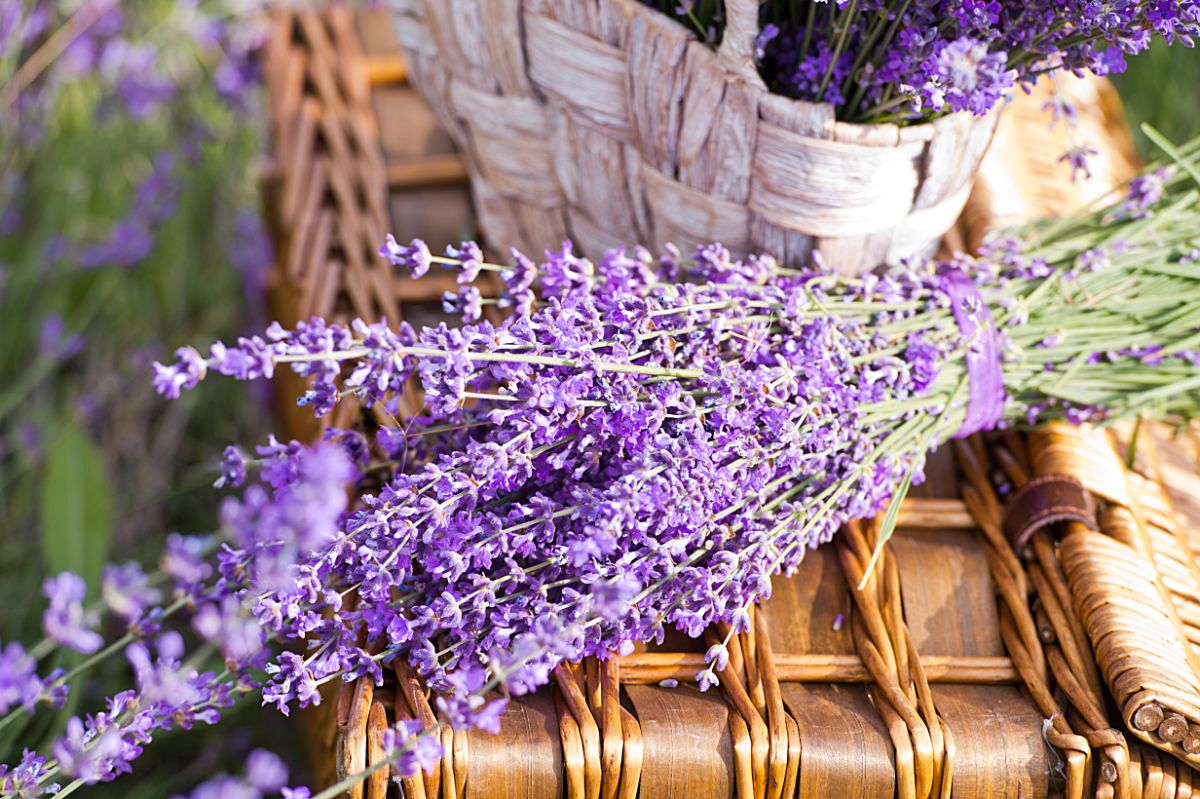
Lavender is one of the most popular fragrances for products in our homes. The scent of lavender has been documented as relaxing, calming, good for anxiety, and even a sleep aid. Lavender hand soaps, perfumes, detergents, dryer sheets, and even air fresheners are hot sellers.
Lavender is distilled into oils, used in baking (highly recommend), and makes a great tea, fun cocktails, or garnish on savory dishes.
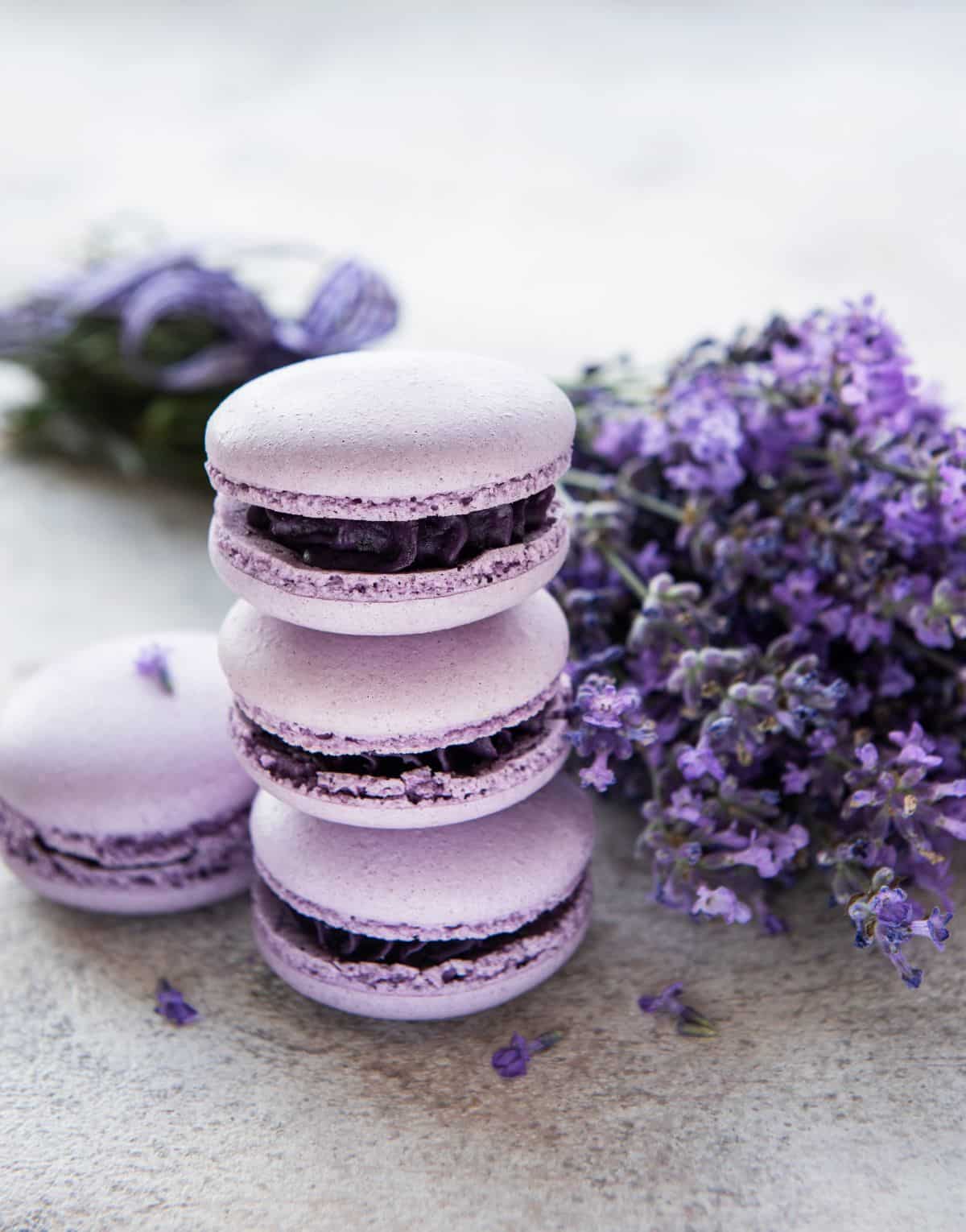
Of course, lavender is also a fantastic perennial in the garden for its beauty. Lavender is a gardener’s easy-going best friend grown in large planters, mixed in with other herbs and flowers for an informal look, or planted en masse for a stunning show of color.
While lavender makes great mass displays, buying dozens of lavender plants can be expensive. If you plan to install a lavender bed or extensive planting, learning how to propagate lavender can be fun and money-saving. Buy one large plant and turn it into many more for free, or start some from seed.
Jump to:
- Types of Lavender
- Ways to Propagate Lavender
- How To Grow Lavender From Cuttings
- To Root a New Lavender Cutting In Soil:
- How To Root Lavender Cuttings in Water
- To Grow Lavender From Seed
- Tips For Growing Lavender
- Prune Your Lavender
- Soil, Sunlight, and Fertilizer Needs of Lavender
- Growing Lavender in Containers
- Avoid These Mistakes When Growing Lavender In Containers.
Types of Lavender
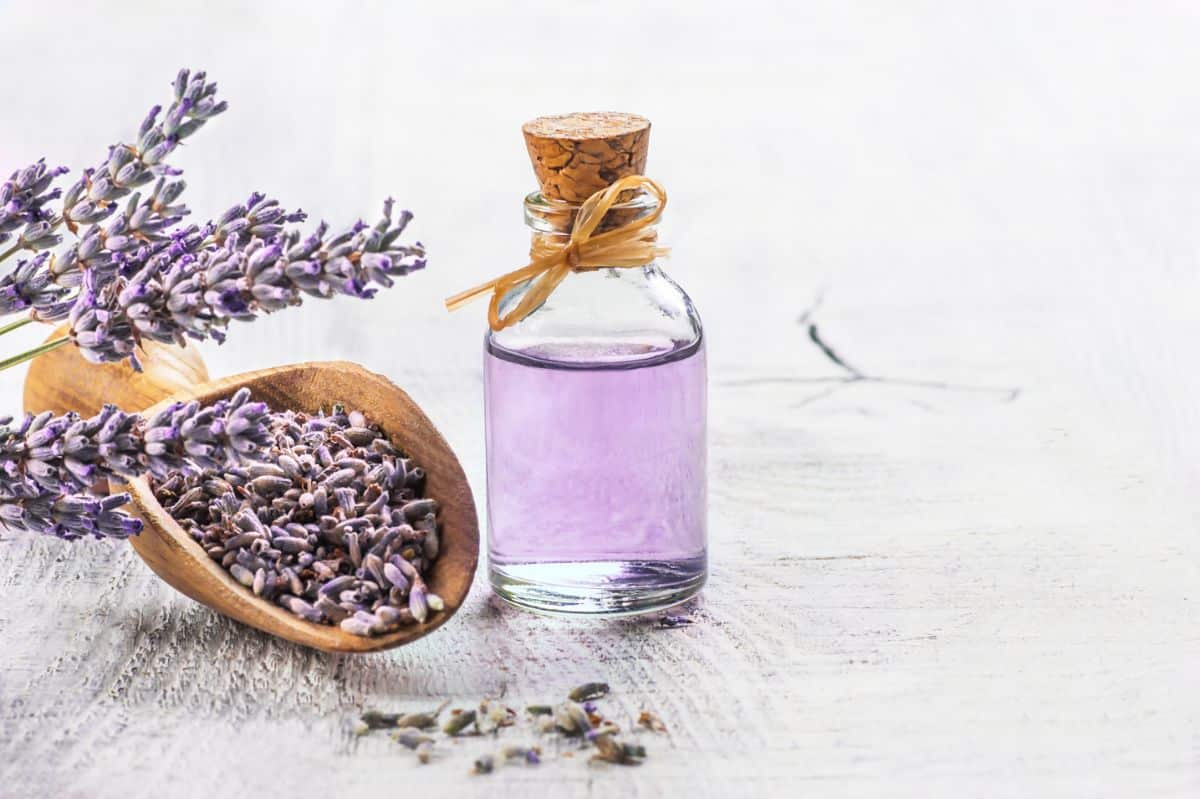
The many different types of lavender can get a bit confusing. English, Spanish, French, Dutch, German, Lavandin. It can get a bit hard to sort out.
Clear up the confusion by recognizing their botanical names. Once you get used to botanical names, they’re not bad and make getting the exact lavender cultivar you want an easier task.
Lavendula is the genus of flowering plants we commonly call lavender. From there, we can add a second name, called a species epithet, to drill down farther, and cultivars like ‘Munstead’ or ‘Hidcote’ to finally arrive at our plant’s botanical name.
Here’s a quick guide to lavender types and their best uses.
Lavendula angustifolia
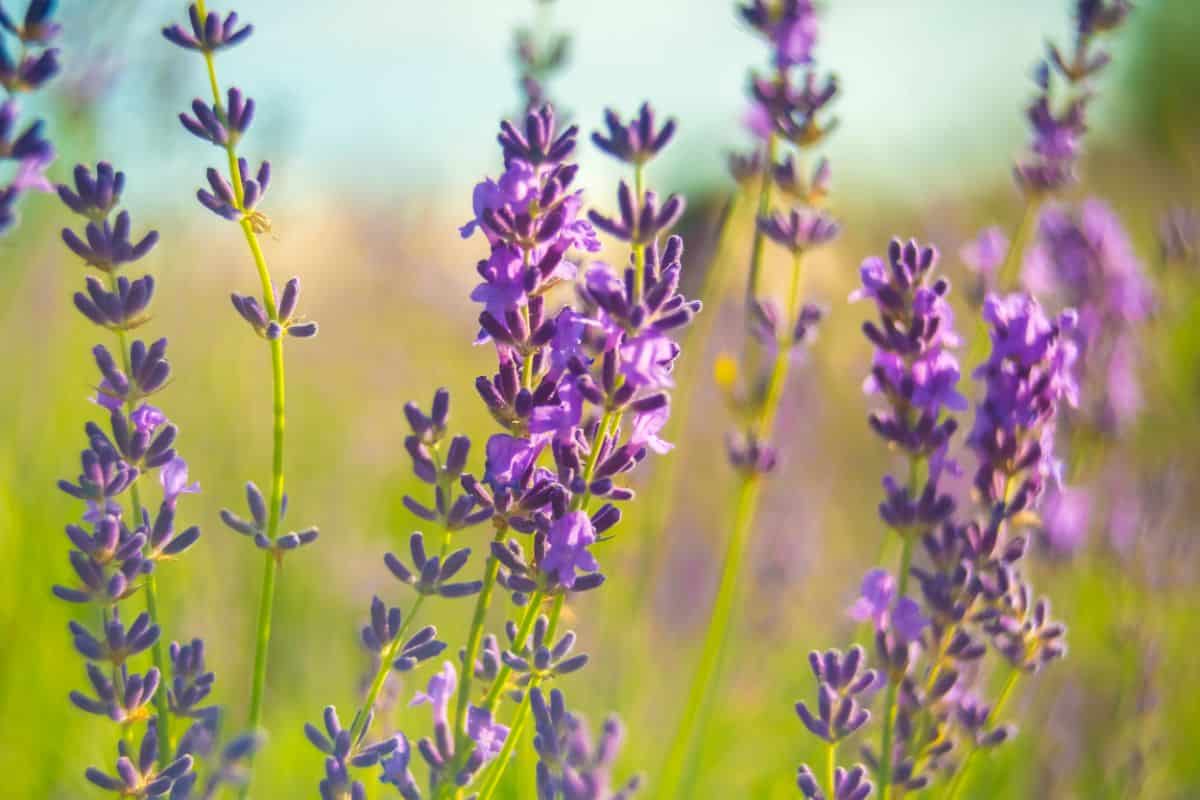
Cultivars of this lavender are widely available and most commonly planted by home gardeners. Commonly called English lavender, L. angustifolia and its many cultivars are used for culinary purposes, flowering displays, and crafts.
They have a sweeter fragrance with less camphor. They are also more cold-hardy than most other lavenders.
Lavendula x intermedia
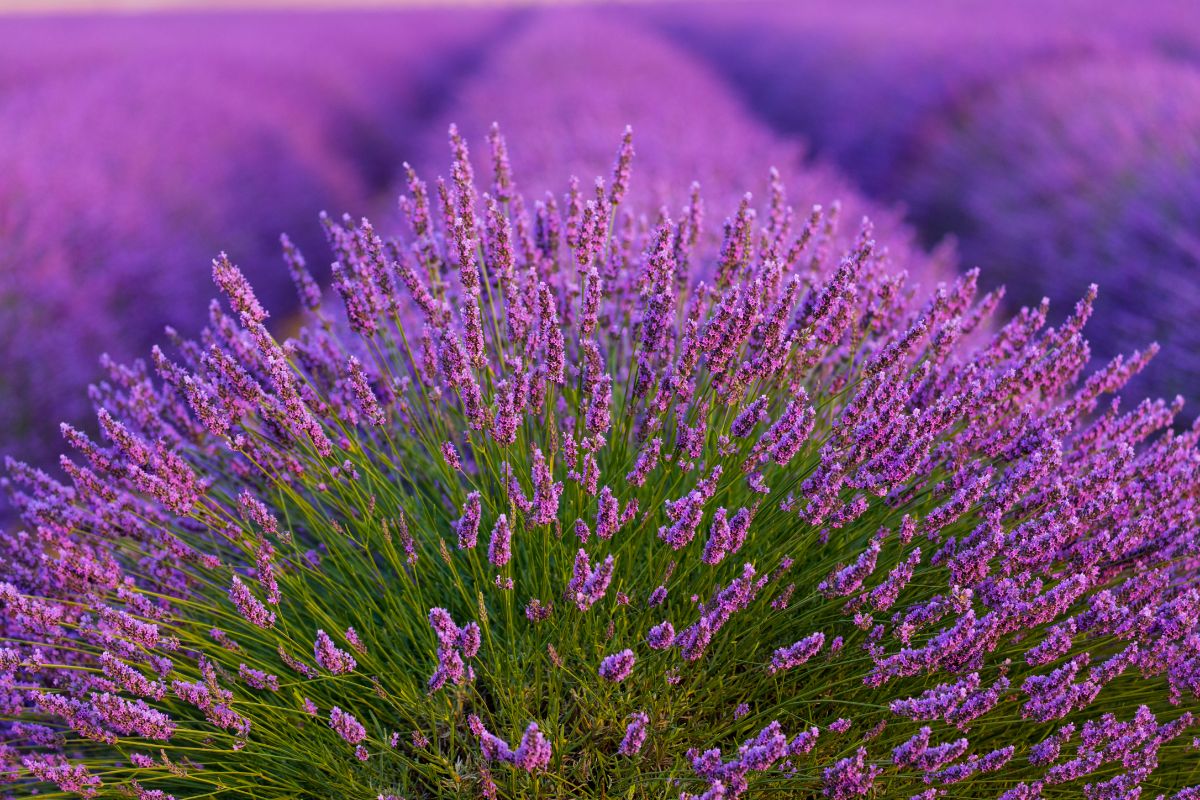
Commonly called Lavandin, this cross includes the ‘Grosso’ cultivar, which is used for about 70% of lavender oil worldwide. Grown for its high oil production, it has a more pungent scent and is what you might find in soaps or cleaning products.
Lavendula stoechas
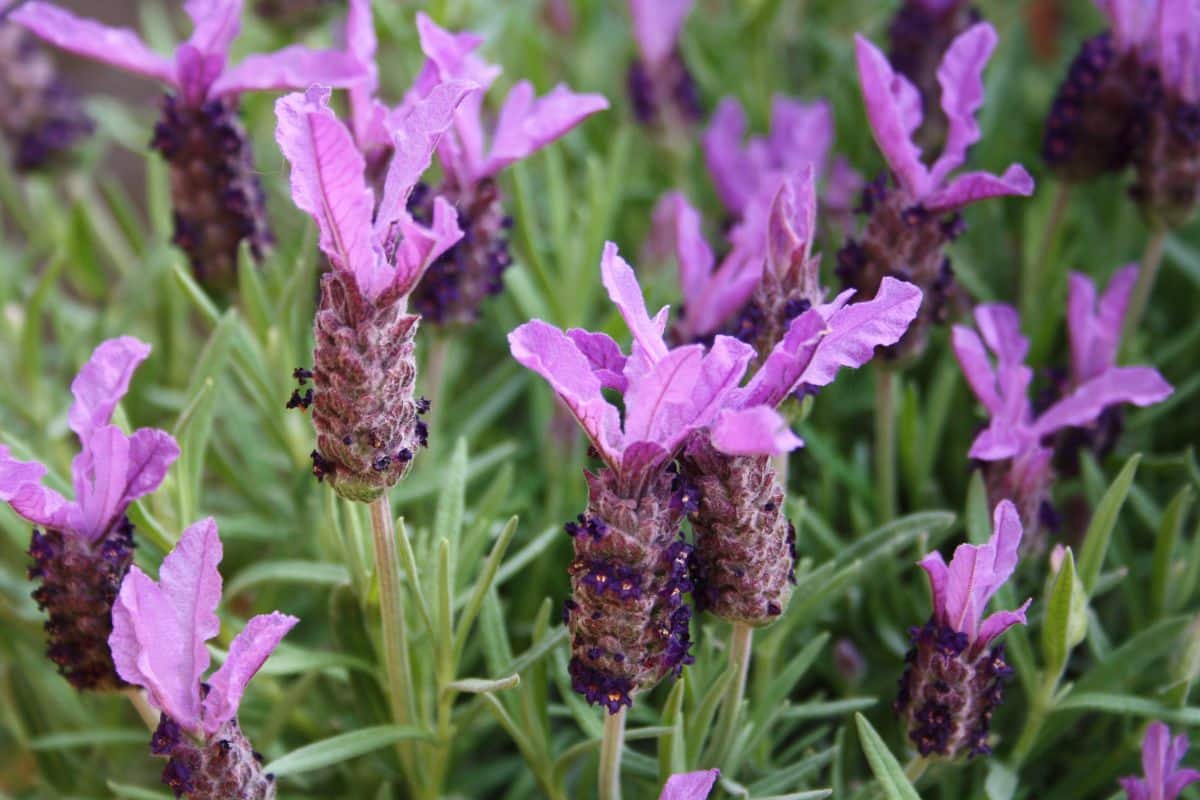
Also called Spanish lavender, L. stoechas has large, striking flowers with long-lasting, colorful bracts around the base and a mild scent. Less cold hardy, this lavender is suitable for USDA zones 6 or warmer. It is better able to tolerate areas with sweltering summer temperatures.
Lavendula dentata
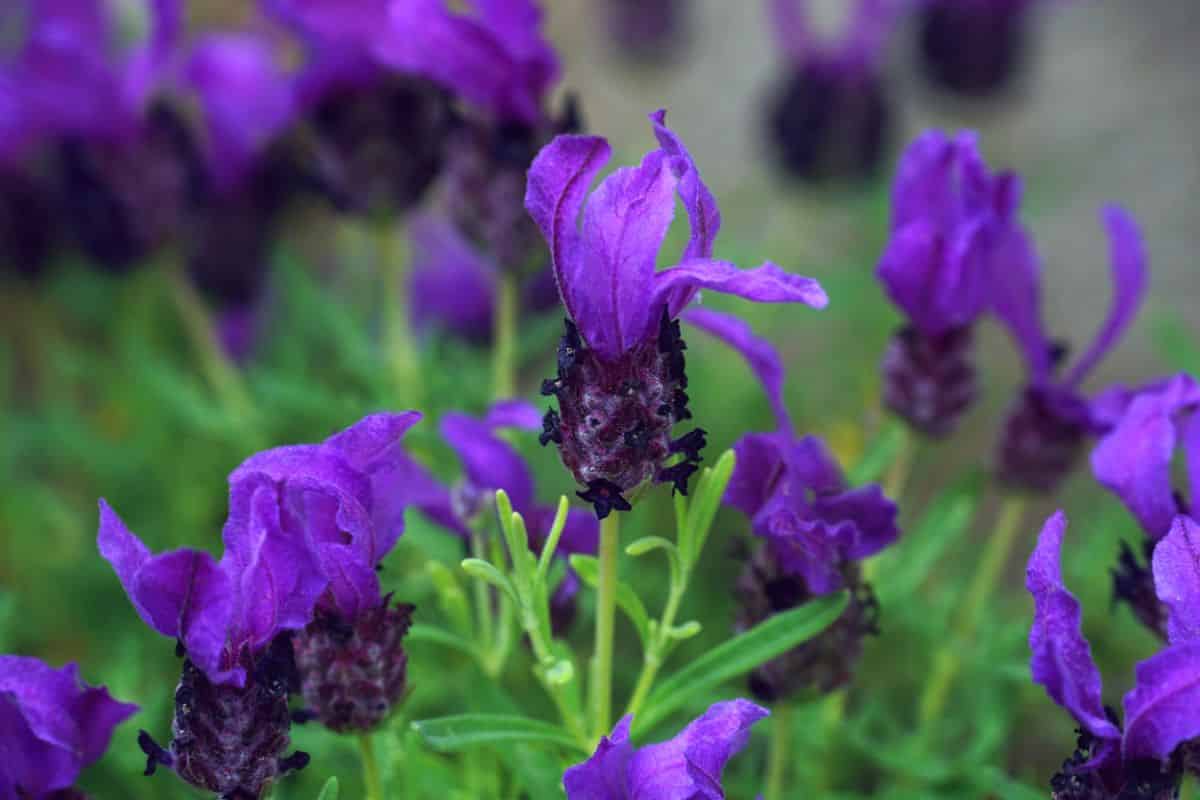
Commonly called fringed lavender or toothed lavender. This plant has sharply indented foliage, almost like saw teeth, and a color grayer than other lavender types. It has a mild fragrance and is excellent for containers. This plant does not like the cold and is hardy only to USDA zone 8 or 9.
Ways to Propagate Lavender
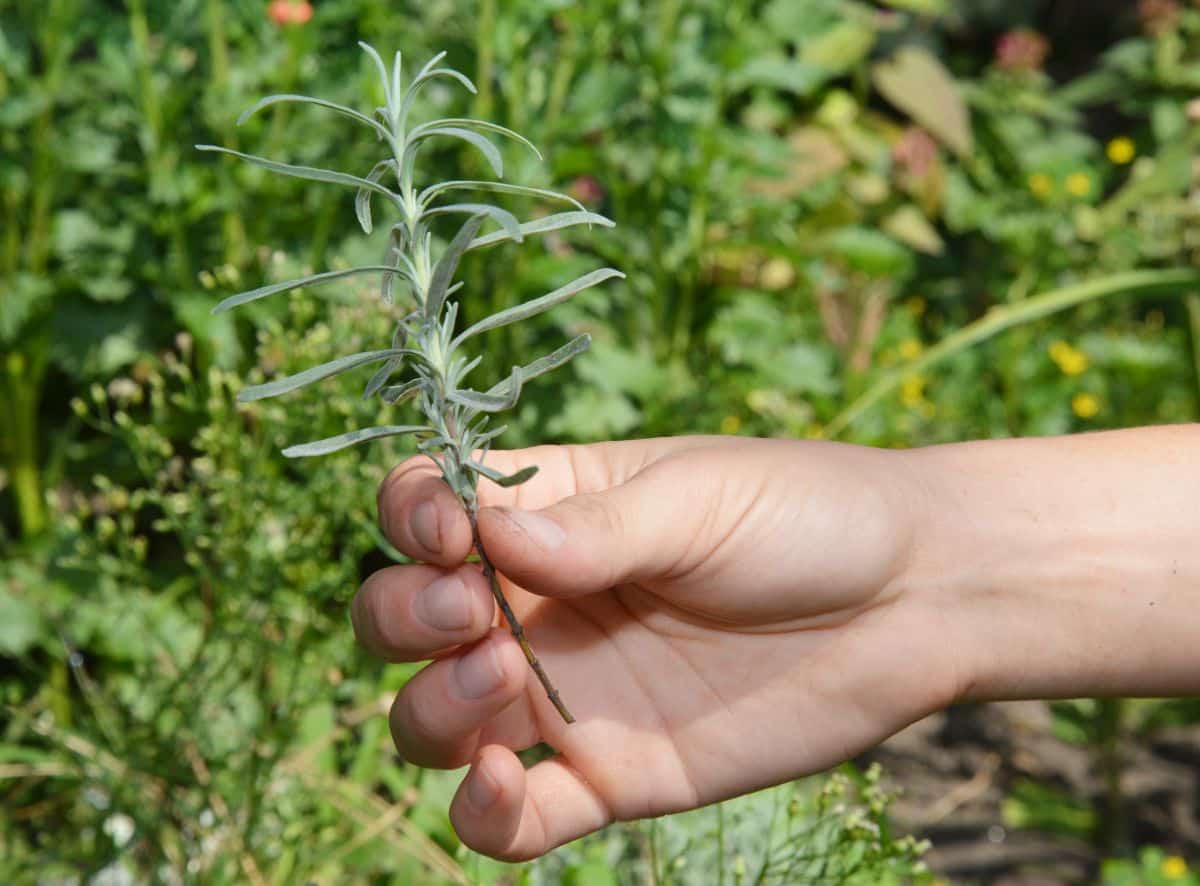
Lavender, like other plants, does not reproduce true to the parent plant when reproduced from seed. New plants grown from seed will be similar but not exactly the same as the parent plant.
Lavender grown from cuttings is an exact genetic match to the parent plant. If you want to make a very uniform lavender patch or already have a plant whose characteristics you like, growing from cuttings is the better method.
I have one lavender plant which survived the winter in much better shape than any others, even though they all received the same treatment. I will be propagating that plant by taking cuttings to copy more of that tougher, more resilient trait.
How To Grow Lavender From Cuttings
Lavender can be rooted from either softwood or hardwood cuttings. If your lavender has been pruned frequently during the growing season, you will likely only have softwood cuttings.
The best time to take these cuttings is in late spring and early summer before the plant starts to set flower buds, but you can try it any time.
To Root a New Lavender Cutting In Soil:
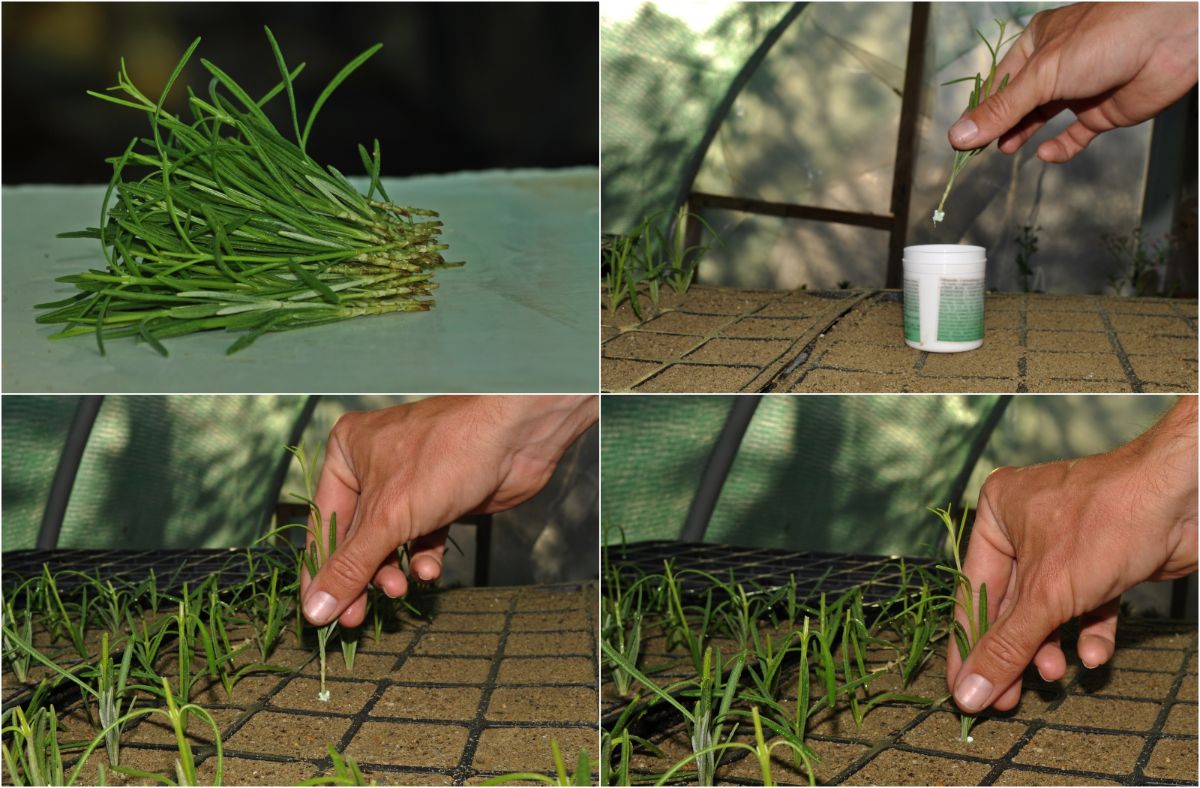
- Select a piece of stem without a flower bud. It does not have to be very long, but it should have at least three nodes.
- Trim it off with sharp scissors or secateurs.
- Gently remove the leaves from the bottom 2-3 nodes, leaving only the top set. The stripped nodes are where roots will develop.
- Optionally, use a knife to scrape the bottom of the stem a little.
- Moisten the end of the stem and dip it in a powdered rooting hormone.
- Stick the cutting in the medium.
- Lightly firm up your starting medium around the stem and place it in a bright location away from direct sunlight.
- Cover with a humidity dome or keep well misted. Keep the medium slightly moist but not soggy.
- In 2-3 weeks, you can check the progress of your new lavender roots by gently giving the stem a little tug.
Check on the lavender starts weekly. Once the new roots have reached the bottom of the cell, they are ready to pot up into 4-inch pots or 1-quart containers and grow out.
Harden them off as you would other young plants before exposing them to the elements, even if this is only to transfer from your spare bedroom to your mini-greenhouse.
At this point, they can be lightly fertilized with dilute soluble fertilizer and given full sun. Continue to let it grow until well established. If there is time left in your growing season, your new lavender can be planted out yet this year. Otherwise, hold them over winter and wait until spring.
How To Root Lavender Cuttings in Water
Lavender cuttings root very easily in water but sometimes have a little trouble surviving transplanting into soil. Take a few more cuttings than you think you’ll need.
- Take your cuttings and remove the leaves from the bottom 3 nodes.
- Place them in your jar or vase filled halfway with clean, chlorine-free water. Don’t leave any leaves underwater.
- Put the container in a shady but warm spot and change the water weekly.
In about 2-3 weeks, you should notice fine roots developing. Wait until the roots have grown thicker before carefully transplanting them into moist potting soil. Harden them off before exposing them to direct sunlight.
To Grow Lavender From Seed
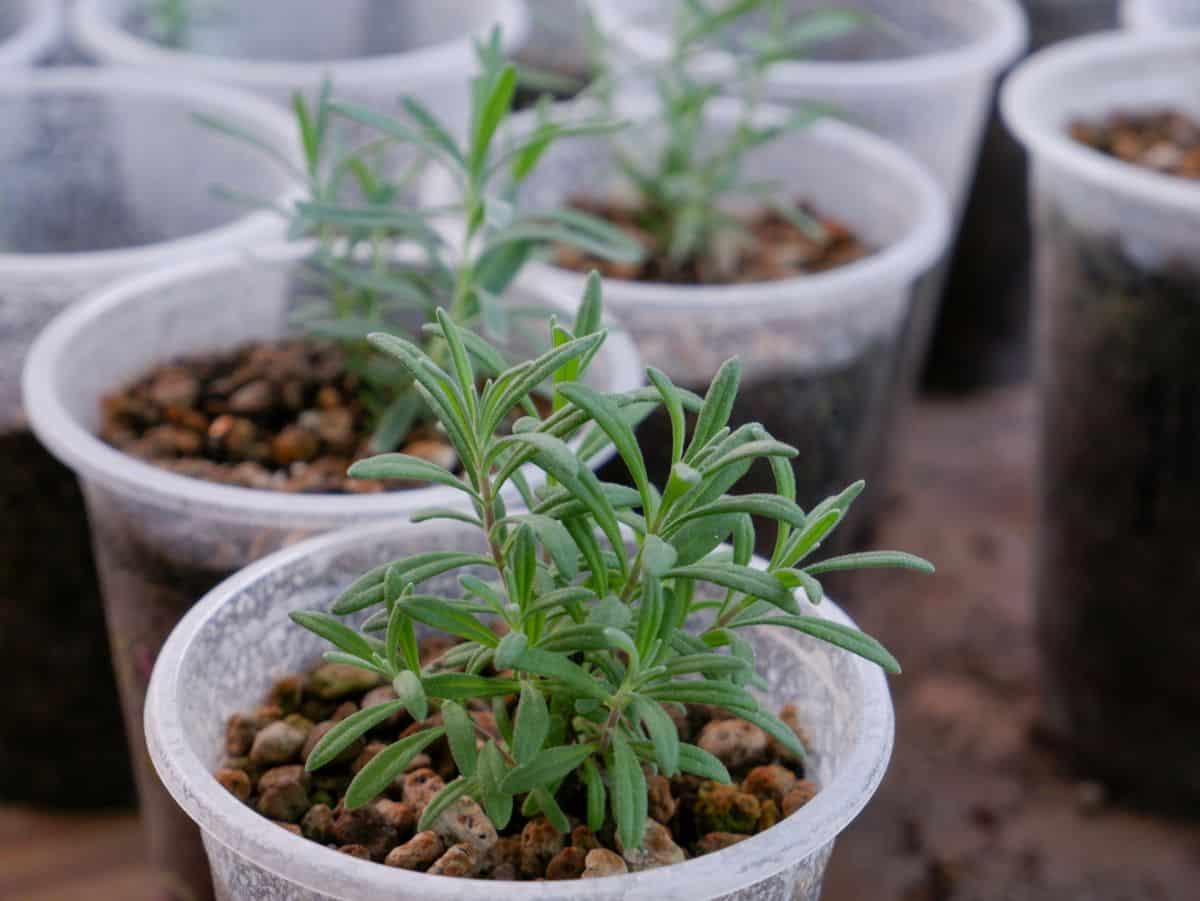
Lavender is easy to grow from seed, but it does grow slowly at first, so patience is required. Obtain seed from a reputable source if you are concerned about the offspring plants being of the correct cultivar.
Lavender seeds lose viability quickly; consider trying your luck with fresher stuff if you have a two or three-year-old packet of lavender seeds lying in your junk drawer. Lavenders do not require stratification to germinate, though some people report higher success after stratification and some seed companies do recommend it.
- Prepare your seed trays. Use any seed starting mix as long as it is well-drained. If in doubt, add some perlite.
- Sow one or two seeds per cell. Use a blunt pencil to make a slight impression on the surface, which makes it easier to see if you dropped a tiny seed in there or not.
- Lavender seeds need light to germinate, so don’t bury them.
- Mist the surface, cover with a humidity dome or plastic wrap, and place in a bright, warm location.
Lavender can sprout as early as five days and take as long as a month, depending on your conditions.
Keep the seedlings moist but not sopping wet. In about 8 weeks, they should be ready to pot up into larger pots for growing out.
Tips For Growing Lavender
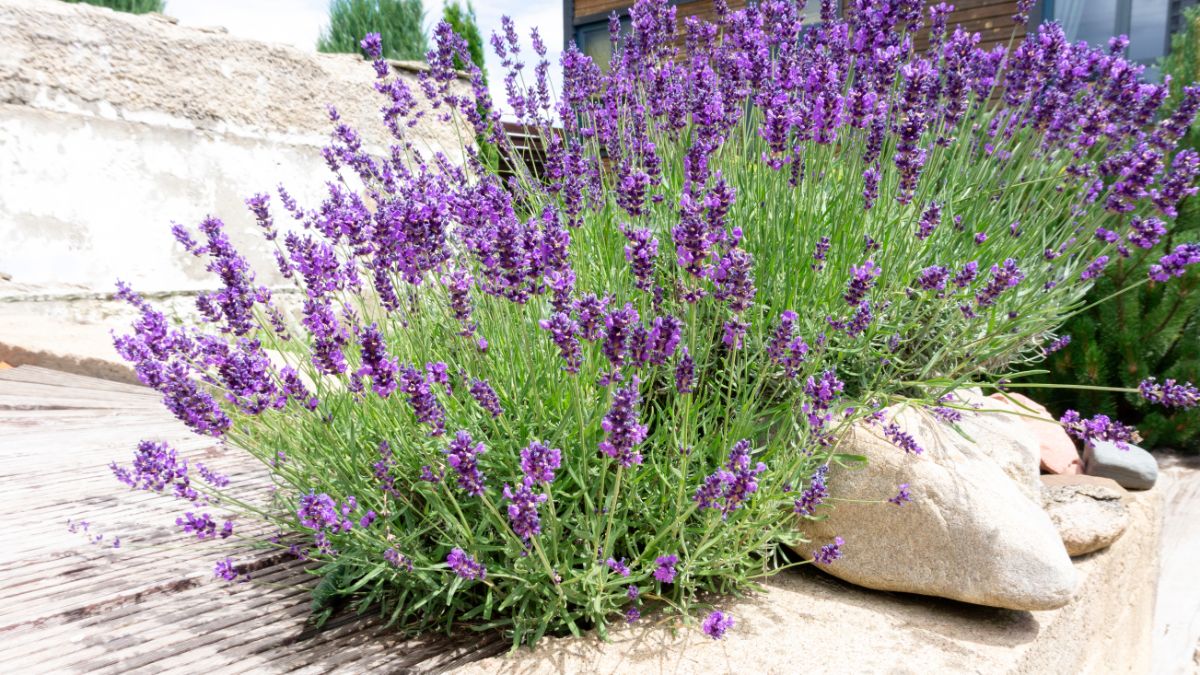
Many lavenders, especially L. angustifolia cultivars, are easy to grow and maintain. They will need little attention after they are established, other than harvesting or pruning.
Prune Your Lavender

Pruning your lavender will keep it from getting woody and sparse. Giving young lavender plants a haircut will encourage them to branch out and become those bushy, full lavender plants we see in magazine articles.
Prune or cut back your lavender after the first flush of flowers in the spring and again after the second flush in late summer or early fall. Don’t cut all the way into the woody base, but cut the stems back by about half or a little more. Try to create a mounded shape, like half a basketball.
Soil, Sunlight, and Fertilizer Needs of Lavender
- Lavender needs good drainage. They will tolerate many poor conditions but will not handle having wet feet. Water pooling around the stem or soggy soil will cause rot and kill the plant.
- Sandy loam is an ideal soil for lavender, but they will grow in most soils that are not pure playbox sand or heavy clay. They like neutral pH.
- Lavenders are not heavy feeders. Too much nitrogen fertilizer will make them bushy and vegetative but inhibit flowering.
- Lavender likes a full 6 hours or more per day of bright sunlight. If you bring it inside for the winter, it may need a supplemental grow light during the dark days of winter, even if you have a sunny window.
Growing Lavender in Containers

One of the beauties of lavender is how well it will grow and flower in a planter, allowing you to create that cottage garden look on your patio or deck. A large planter of lavender is a show-stealer when in bloom.
Avoid These Mistakes When Growing Lavender In Containers.
- Too small a pot: even though your lavender plant may be small, it needs a large pot to fill out and thrive. Plant it in a three-gallon pot and watch it quickly expand.
- Letting it dry out: gardeners know that lavender is from the Mediterranean region, likes excellent drainage, and is drought tolerant, so they don’t water it.
Lavender is drought tolerant once established in the garden with its extensive root system to support it. But placed in a pot with limited space and the limited water holding capacity of the soil in the pot, it can quickly dry out.
If the container has excellent drainage, don’t be afraid to water your lavender planter as often as you do for other plants. Even in the winter, if you bring it inside, don’t let the soil completely dry out.
Try your hand at propagating lavender. Soon, you will have lavender plants all over your garden and patio. With all that new lavender to harvest, you’ll need to try some new uses for it too.
Tell us your favorite lavender recipe or another way you love to use it in the comments below.

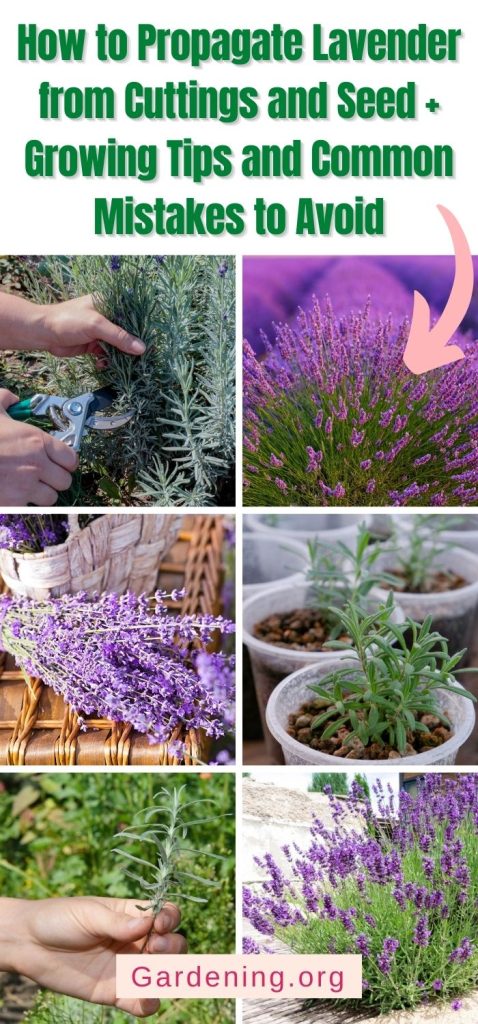
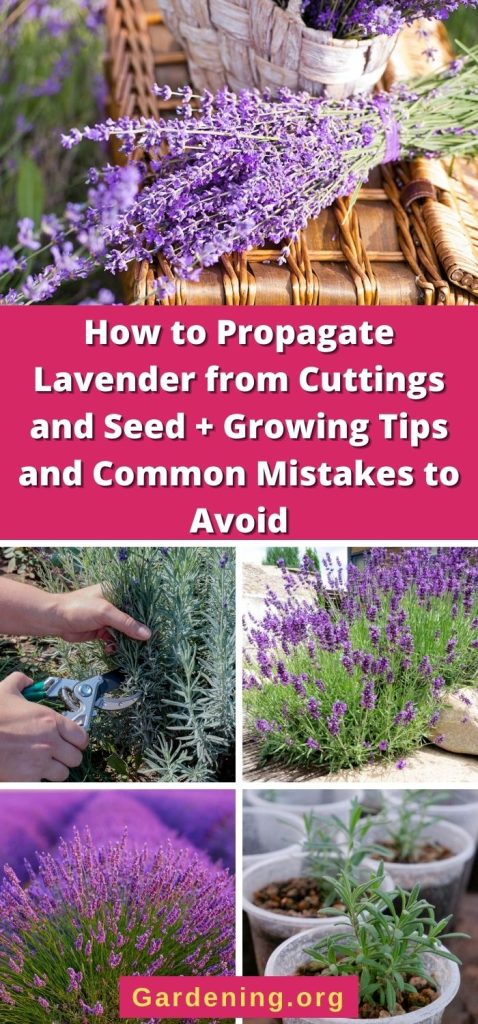
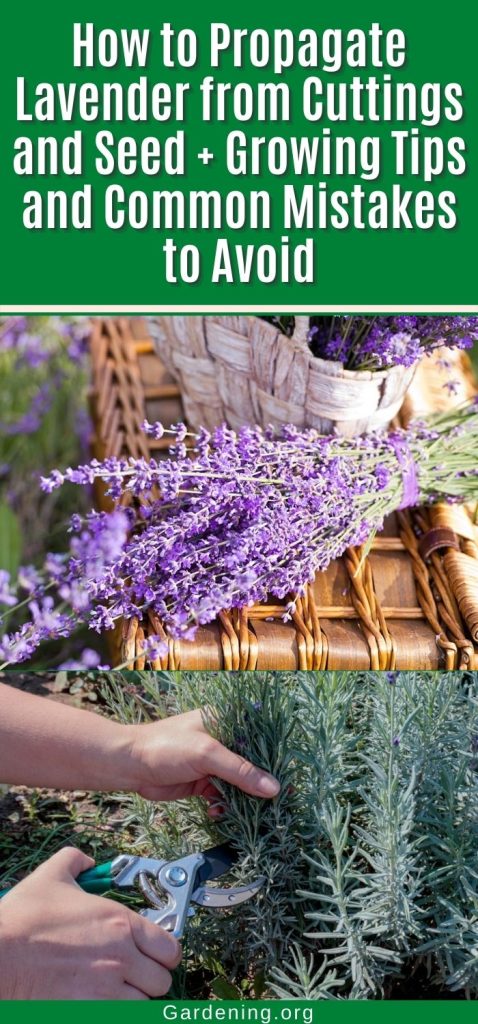
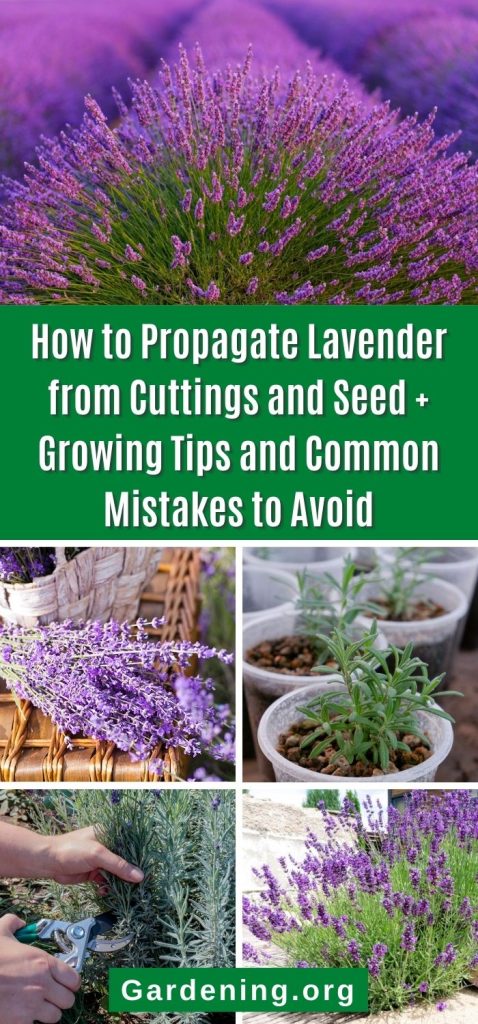
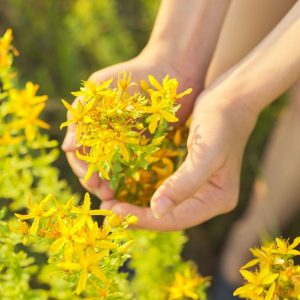
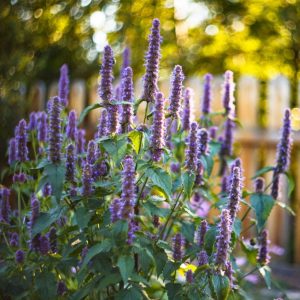
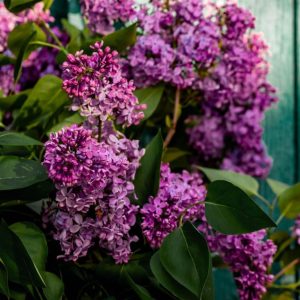
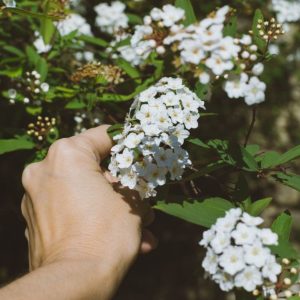
Charlene Klinkenborg
I am grateful to find this article on Facebook. I've.been wanting to grow lavender for many reasons. Where is a good place to get seeds. This article is excellent resource. Thank you.
Mary Ward
Hi Charlene. Glad we can help! I can sometimes find lavender seed at my local garden centers where seeds are sold, but it's not always easy to find lavender locally. Most often, I order it online. Many of the better seed companies will have it. In a pinch, you can get it from Amazon or Etsy sellers, but I personally prefer to buy from a reputable seed company. Park Seed, Bakers Creek, and Pinetree Seed are some of the companies I have bought it from.